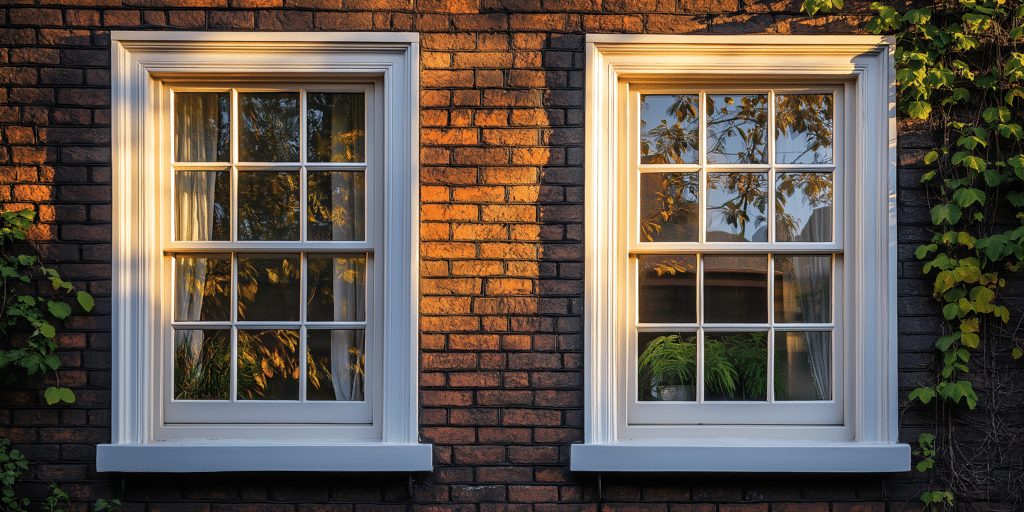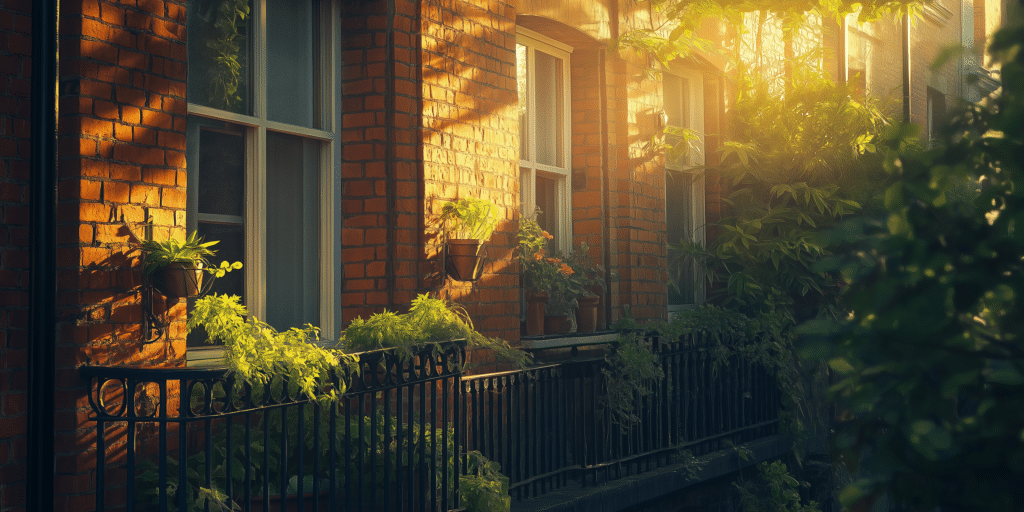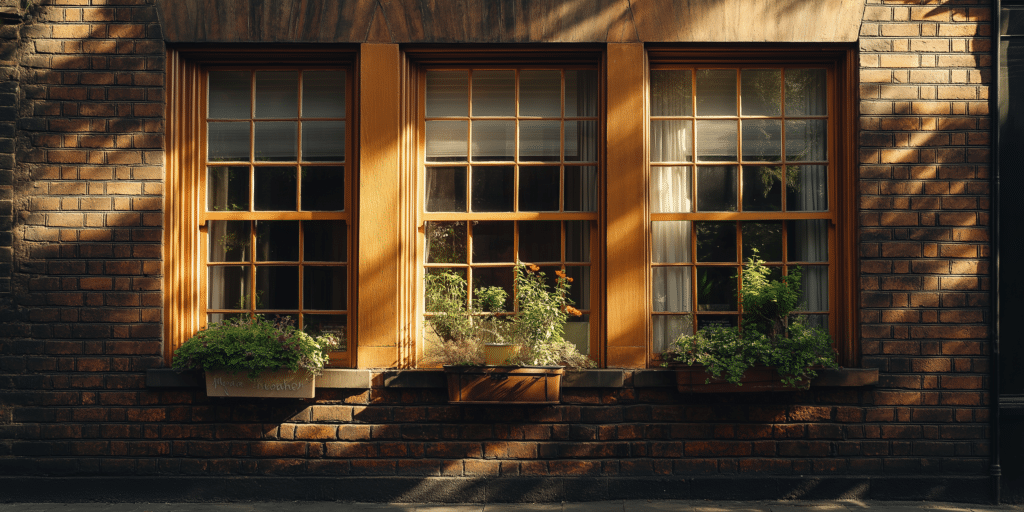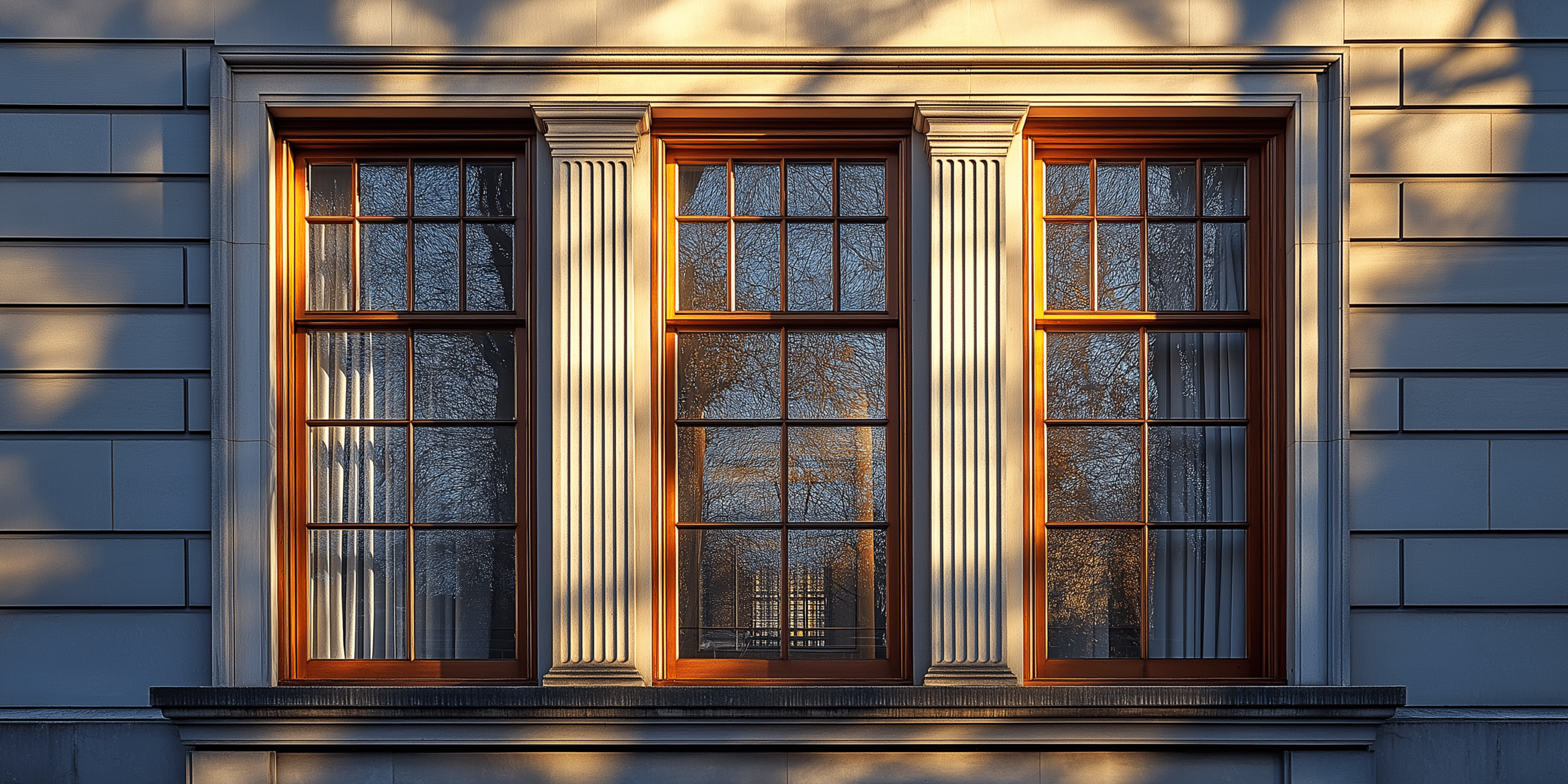What Does ‘Plumb’ Mean in Sash Windows?

In construction, “plumb” refers to something being perfectly vertical. For sash windows, this means that both the frame and the sash are aligned straight up and down with no tilt or angle.
A plumb window ensures smooth operation, as misalignment can lead to sticking or jamming, preventing the window from sliding easily. As noted by sash window experts, “When a window is not plumb, it can increase the strain on the sash components, leading to frequent repair issues.” Ensuring your sash windows are plumb helps maintain the structural integrity of the window frame, preventing long-term wear and tear.
Non-plumb windows can create gaps that allow air leakage, reducing energy efficiency and causing draughts. Research by the Glass and Glazing Federation (GGF) shows that properly fitted and aligned sash windows can improve energy efficiency by up to 75% compared to non-plumb or draughty ones.
Common Causes of Sash Windows Being Out of Plumb
- House Settlement: Over time, buildings naturally settle, which can lead to shifts in the framework of sash windows, making them non-plumb. Expert joiners have noted that historical buildings often require delicate adjustments to account for settlement.
- Poor Installation: Incorrect installation is a common reason why sash windows might not be plumb from the start. Proper fitting is critical to maintaining alignment over time. According to a specialist in sash window restoration, “Improper installation can reduce window efficiency by up to 40%, increasing the need for maintenance.”
- Frame Warping: Wooden sash window frames, especially in older homes, are prone to warping due to moisture and temperature changes, which can cause misalignment.
- General Wear and Tear: Over years of use, the general wear and tear on the cords, weights, and pulleys of sash windows can cause them to fall out of alignment. Repair professionals highlight that ongoing maintenance, particularly for sash pulleys and cords, can extend the lifespan of the windows by up to 30 years.
How to Check if Your Sash Windows Are Plumb
- Use a Spirit Level: The simplest way to check if your sash window is plumb is by placing a spirit level along the sides of the window frame. The bubble should rest in the centre.
- Check the Operation: If the sash doesn’t slide smoothly, this could indicate that the window isn’t plumb. Misalignment often causes friction, leading to operational inefficiencies.
- Inspect the Frame: Visible gaps or uneven contact points between the sash and the frame can indicate that the window is not plumb.
- Use a Plumb Line: This is a string with a weight at the end. Holding up against the window’s side will help you see if the window is perfectly vertical.
The Process of Making a Sash Window Plumb

- Adjusting the Frame: If the frame is out of alignment, you may need to adjust it by removing the architrave and refitting it to ensure it’s perfectly vertical. Industry experts recommend careful adjustments, especially in period properties, to avoid compromising the integrity of historical materials.
- Rebalancing the Weights: If the window doesn’t stay open or falls, the weights may need rebalancing. Properly balanced weights help keep the window plumb. Studies have shown that proper weight balancing can reduce the need for repairs by 80%, prolonging the lifespan of the window.
- Replacing or Repairing Cords: If the cords are worn or broken, replacing them can help restore the window’s alignment and smooth operation.
- Repacking and Shimming: Shimming involves placing small spacers between the frame and the wall to ensure the window sits plumb within the wall opening. Master craftsmen caution against over-shimming, as it can lead to distorted frames.
Tools and Materials Needed to Plumb a Sash Window
- Spirit Level: Essential for checking vertical alignment. Sash window professionals recommend high-quality tools to ensure accuracy.
- Plumb Line: Useful for double-checking the window’s alignment.
- Wood Shims: These adjust the frame and ensure a snug fit.
- Sash Cord and Weights: Replacement materials if your cords or weights need repair. Experts recommend ensuring the correct balance to maintain the plumb position. A well-balanced sash cord and weight system ensure both smooth operation and plumb alignment, reducing long-term stress on the frames.
Professional Sash Window Plumb Adjustment
- Hiring a Professional: While skilled DIYers can make minor adjustments, major misalignments may require the expertise of a professional carpenter or sash window specialist.
- Cost Factors: The cost of making a sash window plumb varies depending on whether the frame needs adjustment, the number of windows involved, and whether other repairs (such as cord replacement or weight rebalancing) are needed. Heritage sash window experts estimate that repairs typically reduce long-term costs by around 30-40% compared to full window replacements.
- Guaranteeing Longevity: A professional job can ensure that your windows remain plumb and operational for years to come, preserving the heritage and function of your sash windows.
Common Mistakes When Attempting to Plumb Sash Windows

- Incorrect Use of Tools: Improper use of a spirit level or plumb line can result in improper alignment.
- Not Addressing Underlying Issues: Merely adjusting the window without addressing causes like frame warping or wear in the pulley system will lead to future issues.
- Overcompensating with Shims: Overusing shims to force alignment can distort the frame or cause operational issues.
- Skipping Weight Balancing: Forgetting to rebalance the sash weights can cause misalignment, preventing smooth opening and closing.
How Plumb Windows Impact Overall Window Performance
- Operational Efficiency: Plumb windows ensure that sashes move freely and lock securely, preventing operational inefficiencies.
- Energy Efficiency Gains: A plumb sash window seals properly, reducing heat loss and improving the insulation performance. Industry studies show that draught-proofing combined with secondary glazing can reduce air leakage by up to 96%, improving overall thermal efficiency.
- Noise Reduction: Ensuring a window is plumb can also improve its ability to reduce external noise, as fewer gaps mean better soundproofing. Proper alignment can decrease noise infiltration by 14-20%, making your home quieter and more comfortable.
- Aesthetic Impact: Crooked or misaligned windows are not just a functional issue—they also detract from the property’s aesthetic, especially in period homes. Restoration experts recommend careful plumb adjustments to maintain the original design integrity of sash windows.
Plumb Sash Windows and Historic Properties
Maintaining plumb alignment is crucial for historical accuracy and compliance with conservation guidelines when working on sash windows in listed or heritage properties. Original window structures must be preserved wherever possible, and ensuring plumb alignment is key to maintaining architectural integrity.
The materials used (such as original wood) must often be preserved in historic homes. Techniques like minimally invasive shimming are key to keeping the window plumb without damaging the original structures. Use traditional materials and methods to maintain the period authenticity of older properties.
Ensuring that windows are kept plumb extends the life of both the window and the building. A misaligned window can cause structural damage over time, leading to costly repairs. Conservation Journal reports that properly maintained sash windows in listed buildings can last over 100 years with routine care.
Historical properties demand a delicate balance between restoration and preservation. Ensuring windows are plumb protects both the architectural integrity and the building’s future.
DIY Plumb Adjustment vs. Professional Restoration

- When DIY is Appropriate: Confident DIYers can handle minor adjustments, such as small shimming or cord replacement. However, proper tools like spirit levels and plumb lines are essential to avoid further misalignment. Careful alignment checks after each adjustment are recommended to avoid operational issues.
- Professional Restoration for Complex Issues: A professional must ensure the frame and sash are correctly aligned and balanced if the window has significant structural issues or the building has settled. Complex restorations involving frame warping or settlement require professional attention to avoid further damage.
- Cost vs Long-Term Savings: While hiring a professional may seem more costly upfront, doing the job correctly ensures long-term functionality and prevents further more expensive repairs. Properly restored sash windows can increase a property’s value by up to 5%.
- DIY Challenges: Sash window restoration can be a rewarding DIY project, but knowing your limits is essential. Improper repairs can lead to long-term issues, making professional help a wise investment for more extensive problems.
Maintenance Tips for Keeping Sash Windows Plumb
- Regular Inspection: Periodically check for gaps or signs of misalignment. Early detection of issues can prevent major repairs. Inspecting sash windows for wear and tear every six months, particularly in older properties.
- Lubricating the Pulley System: Keep the pulleys and cords in good working order to prevent friction that could cause misalignment. The manufacturer recommends lubricating the pulleys annually to maintain smooth operation and alignment.
- Checking Weights and Cords: Ensure the weights are balanced and the cords are not fraying or stretched, as this can cause the window to lean or tilt. Over 50% of operational issues are caused by unbalanced sash weights.
- Seasonal Maintenance: Wood frames can expand and contract with temperature changes, so check the alignment and frame condition at least twice a year. Performing checks in spring and autumn when the weather can cause significant shifts in wooden frames.
Final Thoughts on Plumb Sash Windows
Achieving and maintaining a plumb sash window is essential for its longevity, energy efficiency, and aesthetic appeal. Whether you’re restoring historical windows or maintaining newer installations, ensuring they are properly aligned will improve both function and appearance. While DIY fixes can help with minor adjustments, professional intervention is recommended for more serious issues, ensuring your windows remain a valuable and functional home feature for years.
Correctly plumb windows enhance your home’s visual appeal and improve its market value by preserving both function and heritage.




